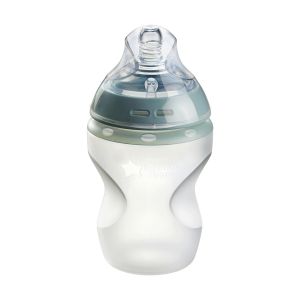
This is a demo store. No orders will be fulfilled.
Subscription orders can be cancelled at anytime. Standard delivery will be charged on each subscription order. Find out more about subscriptions.
They’re easy and fuss free
Your products are automatically sent to you
You save when you sign up for a subscription
You can cancel at any time
If you're breastfeeding and are experiencing painful nipples, it can feel like you're all alone. But don't worry, lots of parents go through nipple soreness at some point in their breastfeeding journey.
Although breastfeeding shouldn't be painful, we know that cracked, bleeding or itchy nipples do happen, and they can be uncomfortable and upsetting.
So, we've gathered some tips and advice to help ease your discomfort and make your breastfeeding journey a little smoother. Read on to learn more about the causes and treatment for sore nipples when breastfeeding.
Lots of parents who breastfeed will experience nipple pain at some point. Many find that their nipples are particularly sensitive in the first few days after birth and this usually improves as they continue to feed.
An incorrect latch or attachment of the baby on the breast is the most common cause of nipple pain from breastfeeding. If your baby isn't in the correct feeding position, your nipple can be squashed or rubbed by their tongue or the roof of their mouth, and this can cause pain and discomfort. If this happens, you may notice that your nipples look flattened, squashed, or red and swollen after a feed.
If you naturally have flat or inverted nipples or are breastfeeding a baby with a tongue tie, you may experience more issues with getting a proper latch.
The following point can also contribute to nipple or breast pain during breastfeeding:
Finding the right type of relief for your sore nipples depends on what's triggering the discomfort in the first place.
Here are some ways to alleviate nipple soreness and discomfort caused by breastfeeding:
If you can, it's best to persevere and try to continue breastfeeding regularly to maintain your milk supply. Expressing your breast milk manually or using a breast pump and then feeding your baby with a bottle can help by giving your nipples a break and time to heal.
Even in the case of a breast infection like mastitis, it's best to continue breastfeeding if you can, unless you've been advised otherwise by a health professional. The antibodies in your milk help to protect your baby from infections.
If you're experiencing pain when feeding or sore nipples that are not healing, you should ask for help and advice from your health visitor, doctor, or the Australian Lactation Consultants Directory.
Finding the right breastfeeding position and getting a good latch can really help to stop your nipples from becoming sore while breastfeeding. Baby-led attachment can help with this, and positions, such as laid-back, football, cradle, and cross-cradle holds can be good options for sore nipples.
Some other ways you can prevent sore or cracked nipples include:
Lightly pressing a warm water compress to your nipples after feeds and gently applying some breast milk to them, then letting them air dry can sometimes provide fast relief. But you must seek advice from a medical professional if you're experiencing nipple soreness that doesn't get better or gets worse over time.
Sometimes nipple soreness, tenderness, and slight discomfort are present in the first few days or weeks when you start your breastfeeding journey. However, this should usually stop being an issue after a few weeks. If the pain continues or is very severe, there may be an underlying issue that needs medical attention.
An improper latch is the main cause of nipple pain when breastfeeding. However, some underlying causes of nipple pain will result in pain even with a correct breastfeeding attachment - such as thrush. If this is the case, you should seek medical treatment to alleviate your nipple pain.